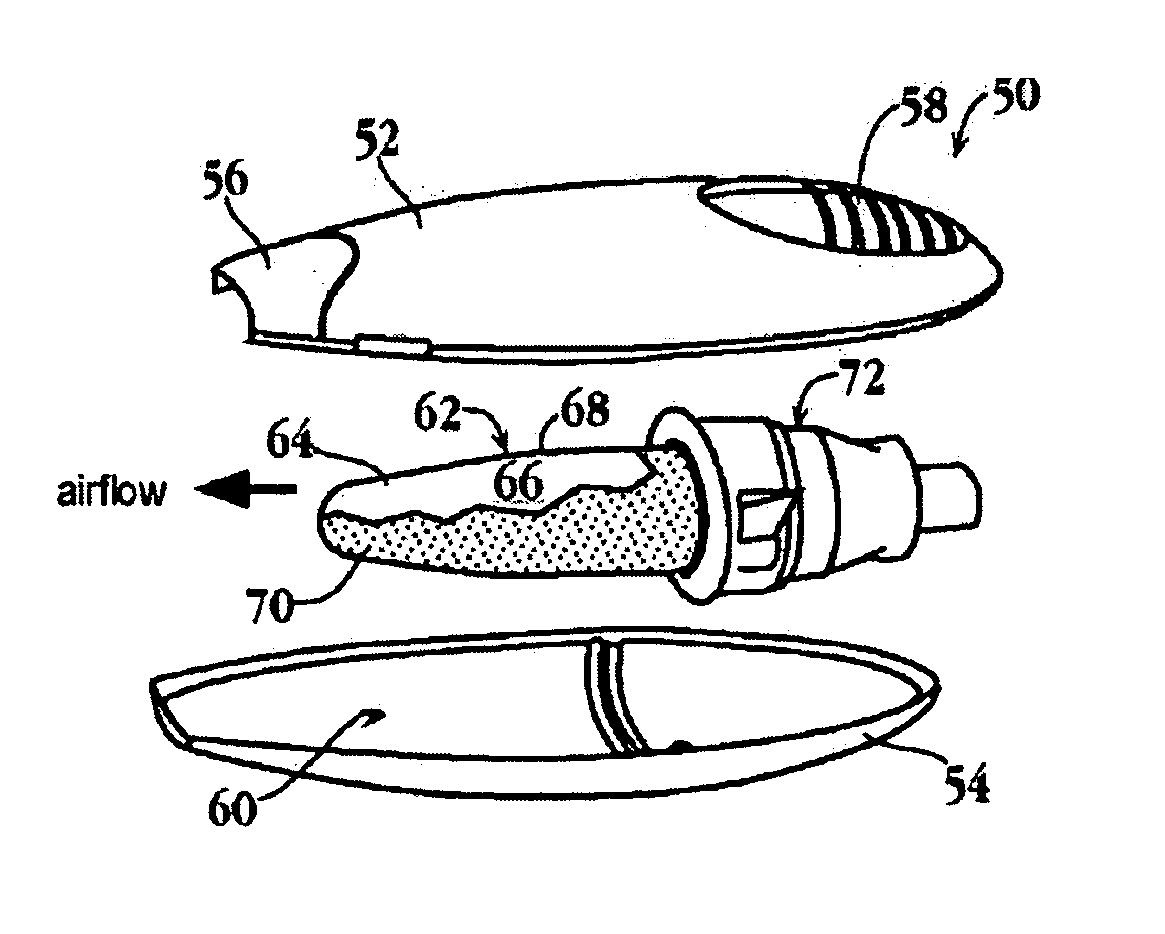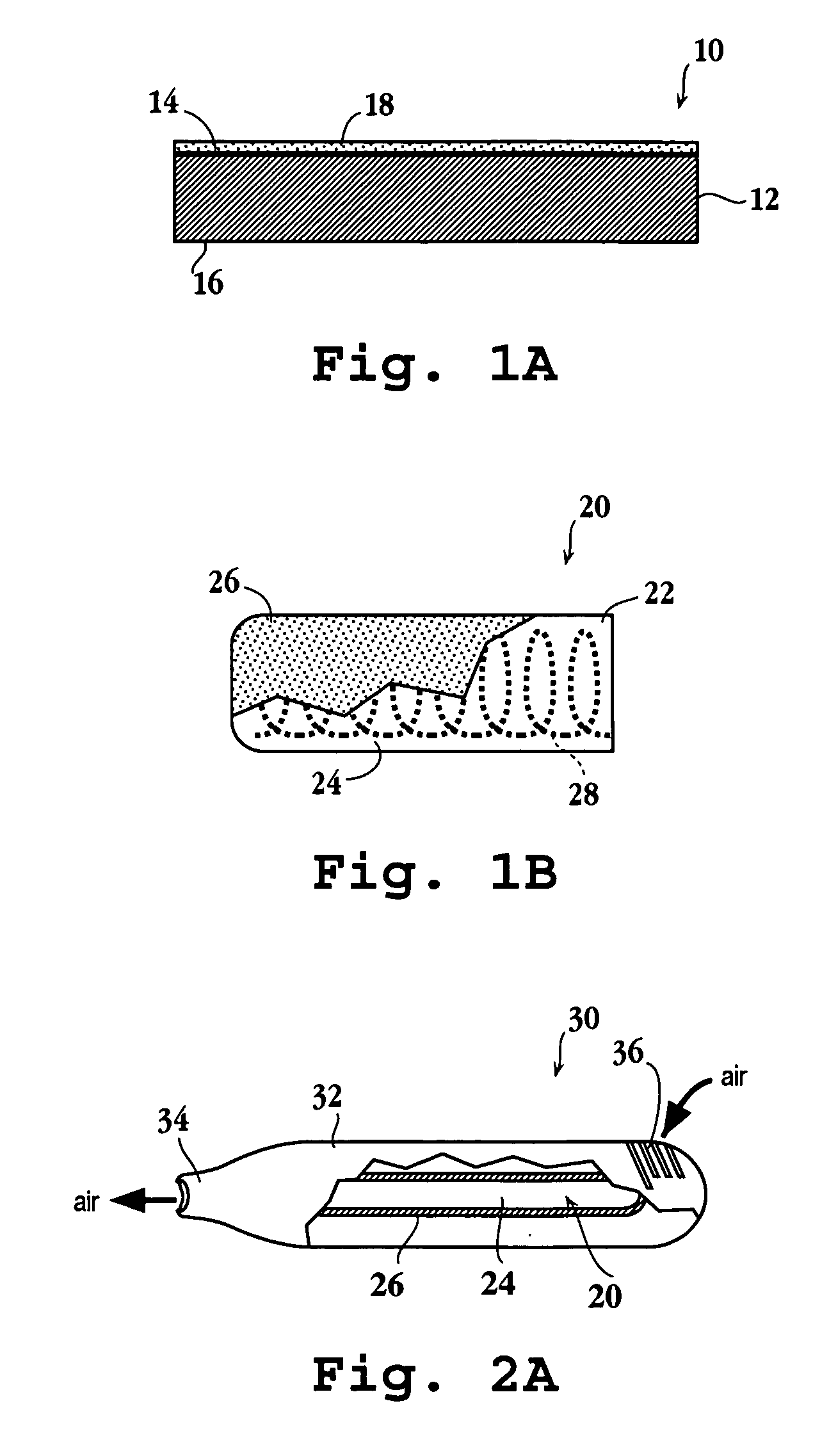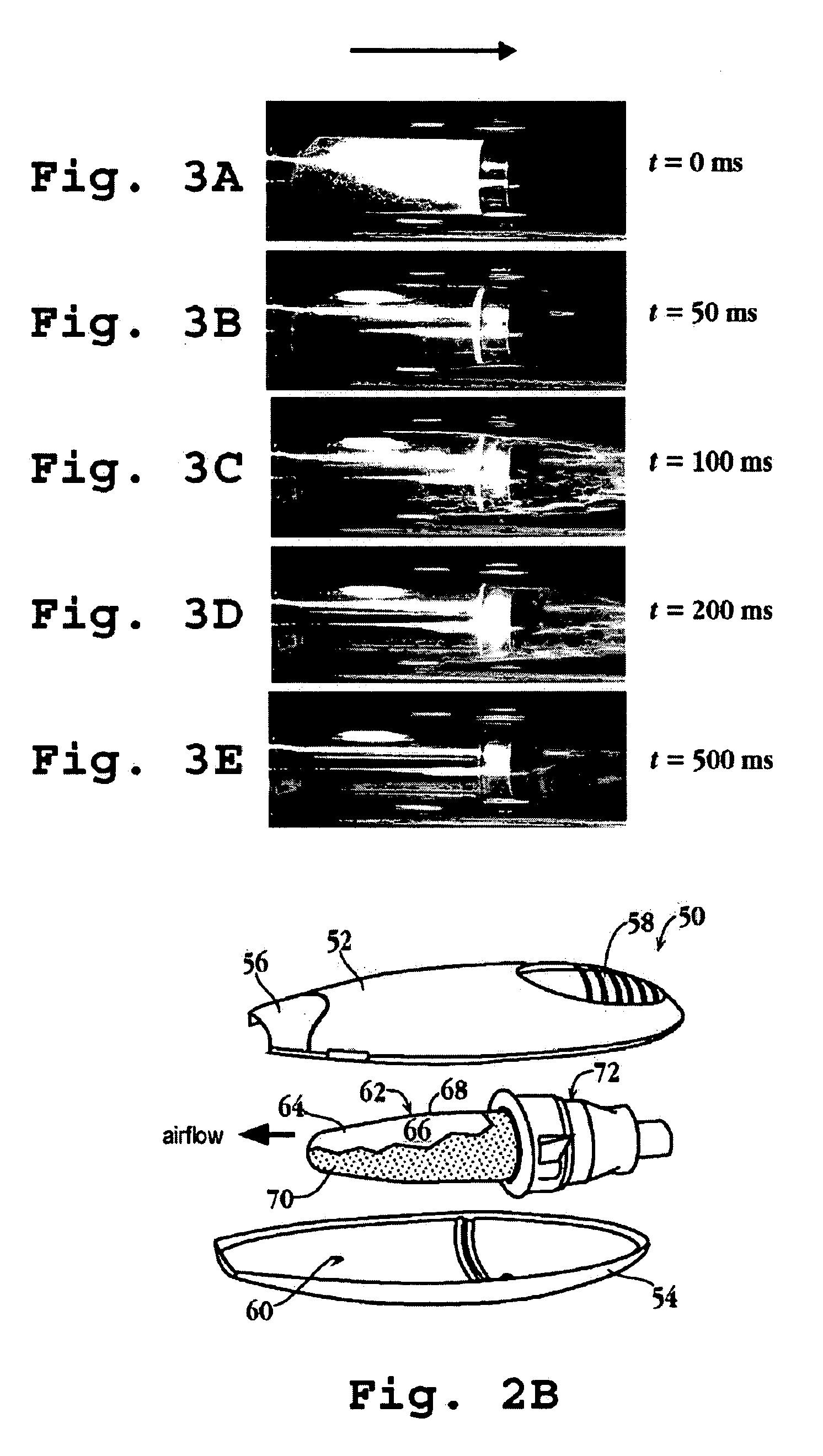Substrates for drug delivery device and methods of preparing and use
a technology of drug delivery device and substance, which is applied in the direction of aerosol delivery, spray delivery, respirator, etc., can solve the problems of poor patient compliance, large aerosol particle size for systemic delivery, and limited treatment role of inhalation therapy in the health care field, and achieve the effect of increasing the purity of drug condensation particl
- Summary
- Abstract
- Description
- Claims
- Application Information
AI Technical Summary
Benefits of technology
Problems solved by technology
Method used
Image
Examples
example 1
Generation of flunisolide aerosol from clean and treated stainless steel substrates 304 and T-430: Strips of steel foils 304 (0.0125 cm thick, Thin Metal Sales), T-430 (0.0125 cm thick, AK steels), and 304 foils coated with zirconium oxide (0.0125 cm thick, coated with 1.5 micron thick ZrO2 overcoat, Thin films Research Inc.) having dimensions 1.3 cm by 7.0 cm were cleaned by sonication in 6.5% Ridoline 298 aqueous solution for 30 min followed by thorough rinsing with DI water and acetone. Half of non-zirconium oxide coated 304 foil and half of the T-430 steel foils were heated in an oven at 350° C. for 6 hours in an air atmosphere. As a result of the heating, these foils were oxidized, and underwent a color change from silver to bronze. All foils were dip-coated with a flunisolide solution in dichloromethane. The concentration of the solution was varied to alter the flunisolide coating thickness on the steel foils. After drying, the drug coating from the last 2-3 cm was carefully ...
example 2
Generation of eletriptan aerosol from heat-treated stainless steel substrate having a heat-treated exterior: Strips of 304 stainless-steel foil (0.0125 cm thick, Thin Metal Sales) having dimensions 1.3 cm by 7.0 cm were cleaned by sonication in 6.5% Ridoline 298 aqueous solution for 30 min followed by thorough rinsing with DI water and acetone. Half of the foils were heated in an oven at 350° C. for 6 hours with air flow into the oven. As a result of the heating, these foils became strongly oxidized, and underwent a color change from silver to bronze. All foils were dip-coated with an eletriptan solution in acetone. The concentration of the solution was varied to alter the eletriptan coating thickness on the steel foils. Foils were subsequently vaporized as described in herein. The discharge voltage was set to 17.5 Volts, which results in a peak substrate temperature of about 450° C., as measured by an infrared camera (FLIR Thermacam SC3000).
In all cases, the quantity of drug rem...
example 3
Generation of alprazolam aerosol from heat-treated stainless steel substrate: Strips of 302 / 304 stainless-steel foil (0.00125 cm thick, Thin Metal Sales), having dimensions 6.8 cm by 1.3 cm, were cleaned by rinsing with dichloromethane. One-third of the foils were then heated in an oven at 350° C. for 1 hour. Another third of the foils were heated in an oven at 350° C. for 6 hours. As a result of the heating, these foils became strongly oxidized, and underwent a color change from silver to bronze. All foils were dip-coated with an alprazolam solution in dichloromethane. The concentration of the solution was 50 mg / mL. The foil was then partially dipped two times into pure dichloromethane to rinse drug off of the bottom of the dipped end of the foil. The final coated area was about 2 cm by 1.3 cm on both sides of the foil, for a total area of about 5.2 cm 2. Several foils, of both the control and the two heat-treated groups, were extracted immediately with acetonitrile and quantified...
PUM
| Property | Measurement | Unit |
|---|---|---|
| temperature | aaaaa | aaaaa |
| thick | aaaaa | aaaaa |
| thickness | aaaaa | aaaaa |
Abstract
Description
Claims
Application Information
 Login to View More
Login to View More - R&D
- Intellectual Property
- Life Sciences
- Materials
- Tech Scout
- Unparalleled Data Quality
- Higher Quality Content
- 60% Fewer Hallucinations
Browse by: Latest US Patents, China's latest patents, Technical Efficacy Thesaurus, Application Domain, Technology Topic, Popular Technical Reports.
© 2025 PatSnap. All rights reserved.Legal|Privacy policy|Modern Slavery Act Transparency Statement|Sitemap|About US| Contact US: help@patsnap.com



